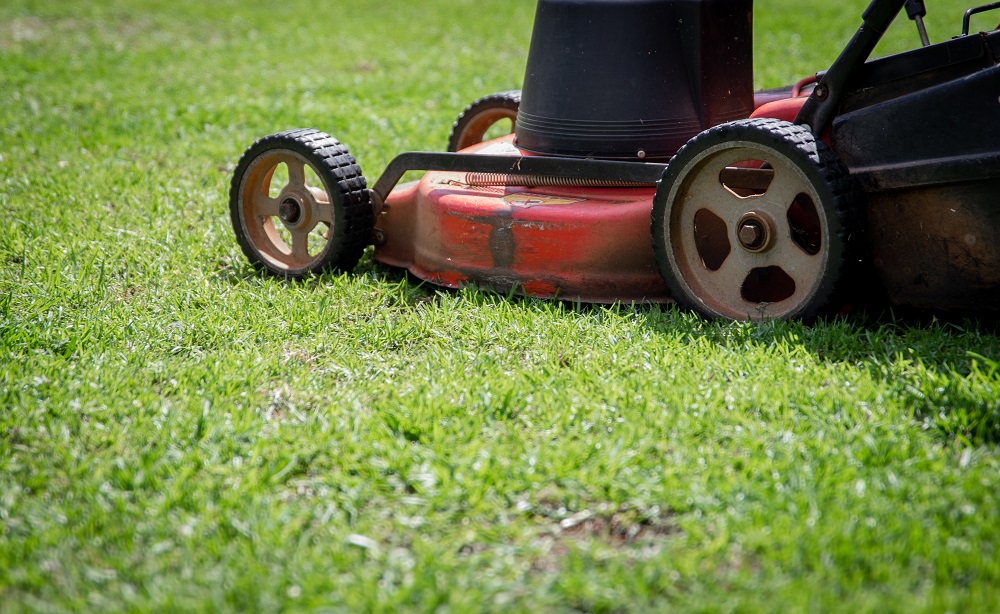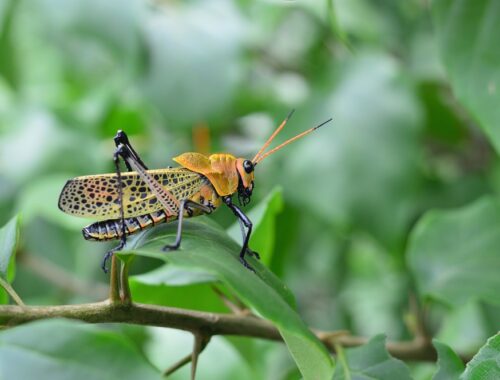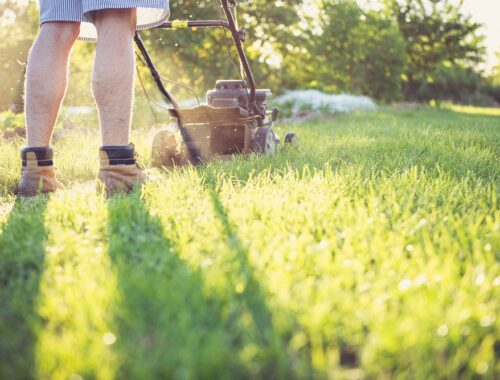Lawn Mowing Best Practices for a Professionally Manicured Look

A well-manicured lawn is a source of pride for homeowners and a hallmark of a meticulously maintained landscape. Achieving that lush, green carpet-like appearance requires more than just occasional mowing; it demands a commitment to lawn care best practices. In this comprehensive 2000-word article, we will delve into the essential steps and techniques to attain a professionally manicured lawn through expert lawn mowing practices.
Understanding the Grass Type
Before we dive into the best mowing practices, it’s crucial to understand the type of grass you have in your lawn. Different grass varieties have specific growth patterns, heights, and maintenance requirements. Common grass types include Kentucky Bluegrass, Bermuda grass, Zoysia grass, and Fescue grass, among others. Identifying your grass type is the first step toward achieving a beautifully manicured lawn.
The Right Equipment
Choosing the right lawn mower is vital for achieving a professionally manicured look. Here are some considerations:
1. Mower Type
- Rotary Mowers: Ideal for most grass types, they have a spinning blade that cuts grass evenly.
- Reel Mowers: Suitable for fine grasses like Bermuda and bentgrass, as they provide a precise cut.
2. Mower Blades
- Sharp Blades: Keep your mower blades sharp to ensure clean cuts and minimize damage to grass.
- Blade Height: Adjust the blade height according to your grass type’s recommended height range.
3. Mower Maintenance
- Regular servicing of your mower ensures it operates at peak efficiency and produces a professional cut.
Timing Is Everything
Mowing frequency and timing play a crucial role in achieving a manicured lawn.
1. Avoid Scalping
- Never remove more than one-third of the grass height in a single mowing session to prevent scalping.
- Frequent mowing, especially during the growing season, helps maintain an even and manicured appearance.
2. Seasonal Considerations
- Adjust your mowing schedule based on the season and grass growth rate.
- Warm-season grasses often require more frequent mowing during summer, while cool-season grasses may need less in the fall.
3. Dry Grass
- Mow when the grass is dry to prevent clumping and ensure a clean cut.
- Early morning or late afternoon is usually the best time to mow, as the grass has dried from morning dew.
The Importance of the ‘One-Third Rule’
To maintain a professionally manicured look, adhere to the ‘One-Third Rule.’ This rule states that you should never cut more than one-third of the grass blade’s height in a single mowing session.
Benefits of the ‘One-Third Rule’
- Encourages healthy root development.
- Reduces stress on the grass.
- Promotes a neat and manicured appearance.
Grass Height Matters
The height at which you maintain your grass significantly impacts its overall appearance and health.
1. Different Grass Heights
- Most cool-season grasses thrive when maintained at a height of 2.5 to 4 inches.
- Warm-season grasses typically look best between 1 to 2 inches in height.
2. Shade and Sun Conditions
- Adjust the grass height depending on sun exposure and shade in your lawn.
- Shaded areas can have slightly taller grass to compensate for reduced sunlight.
Mowing Patterns
Achieving a professionally manicured look also depends on the mowing pattern you choose.
1. Alternating Patterns
- Vary your mowing direction to prevent soil compaction and grass wear.
- Common patterns include striping, checkerboard, and diagonal mowing.
2. Striping Techniques
- Achieve the classic striped appearance by using a striping kit or a roller attachment on your mower.
- This method enhances curb appeal and gives your lawn a professional sports field look.
Grass Clippings: To Bag or Not to Bag
Debates abound about whether to collect grass clippings or leave them on the lawn.
1. Mulching Benefits
- Mulching clippings returns valuable nutrients to the soil, promoting grass health.
- Mulched clippings also help retain moisture and improve soil structure.
2. Bagging Considerations
- Bagging is essential if the grass is excessively tall or if you’ve allowed your lawn to grow too long.
- Bagging may be necessary for aesthetic reasons, such as during special events.
Edging and Trimming
For a professionally manicured look, don’t forget about edging and trimming.
1. Edging
- Use a dedicated edging tool or a string trimmer to create clean, defined borders along sidewalks, driveways, and flower beds.
- Neat edges provide a polished appearance to your lawn.
2. Trimming
- Trim grass in hard-to-reach areas, such as around trees, fences, and landscaping features.
- Trimmed areas should complement the overall mowed appearance of the lawn.
Proper Watering Practices
Mowing alone won’t create a professionally manicured look if your lawn lacks proper hydration.
1. Consistent Watering
- Water your lawn consistently, providing 1 to 1.5 inches of water per week, either through rainfall or irrigation.
- Water deeply and infrequently to encourage deep root growth.
2. Avoid Overwatering
- Overwatering can lead to disease and shallow root growth, compromising the manicured appearance.
- Monitor soil moisture levels and adjust your watering schedule accordingly.
Fertilization and Soil Health
A lush, professionally manicured lawn relies on a healthy soil foundation.
1. Soil Testing
- Conduct a soil test to determine nutrient deficiencies and pH levels.
- Amend the soil as needed to create an ideal environment for grass growth.
2. Fertilization Schedule
- Follow a regular fertilization schedule based on your grass type’s requirements.
- Choose a balanced fertilizer to provide essential nutrients for optimal growth.
Dealing with Lawn Weeds
Weeds can detract from the manicured look of your lawn. Here’s how to manage them effectively.
1. Pre-Emergent Herbicides
- Apply pre-emergent herbicides in early spring to prevent weed seeds from germinating.
- Timing is crucial for successful weed prevention.
2. Post-Emergent Control
- Address existing weeds with post-emergent herbicides or manual removal.
- Spot treat weeds to minimize damage to the surrounding grass.
Aeration and Dethatching
Periodic lawn aeration and dethatching are essential for maintaining a professionally manicured lawn.
1. Aeration Benefits
- Aeration improves soil compaction and allows nutrients, water, and air to penetrate the root zone.
- It encourages robust root growth and overall lawn health.
2. Dethatching Importance
- Remove excess thatch (a layer of dead grass and debris) to prevent suffocation of the grass.
- Dethatching tools or equipment can help restore a healthy, manicured appearance.
Lawn Care Calendar
Creating a lawn care calendar can help you stay on top of maintenance tasks and achieve a professionally manicured look year-round.
1. Spring
- Aerate and dethatch.
- Apply pre-emergent herbicides.
- Begin regular mowing.
2. Summer
- Maintain regular watering.
- Adjust mowing frequency based on grass growth.
- Continue weed control efforts.
3. Fall
- Fertilize according to your grass type’s needs.
- Rake leaves and debris.
- Overseed if necessary.
4. Winter
- Limit foot traffic on the lawn.
- Remove snow promptly to prevent damage.
Achieving a professionally manicured lawn is an art and a science. It requires a combination of knowledge, dedication, and consistent effort. By understanding your grass type, using the right equipment, adhering to mowing best practices, and implementing a comprehensive lawn care regimen, you can transform your lawn into a beautifully manicured masterpiece.
Remember that a professionally manicured lawn not only enhances your home’s curb appeal but also provides a lush, inviting space for outdoor activities and relaxation. With the right approach to lawn care, you can enjoy a lawn that is the envy of the neighborhood and a source of pride for years to come.
Generated by ChatGPT
You May Also Like

Seasonal Lawn Maintenance: What You Need to Know
July 8, 2023
Common Lawn Pests and Diseases in Roswell, Georgia: Prevention and Control
June 2, 2023

